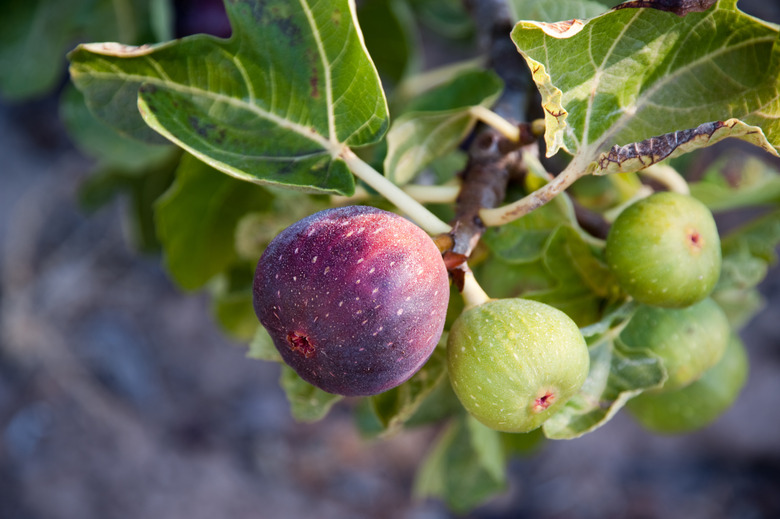Ideal Fruit Trees For Alabama
We may receive a commission on purchases made from links.
Hot summers and mild, chilly winters across Alabama affect which types of fruit trees grow best and produce fruits. Northern counties endure colder winters that those nearest the Gulf of Mexico, and Alabamians need to select fruit trees rated to grow with the appropriate number of chilling hours in order for flowering and fruit set.
Many fruit trees are grafted upon disease-resistant, hardy root stock that improves the tree's performance in the climate and soils. Contact your local office of Alabama Cooperative Extension Service for specific variety recommendations for your area of the state, in either U.S. Department of Agriculture hardiness zone 7 or 8.
Finding the Right Apples
Finding the Right Apples
Spur-type apple trees (Malus spp.) produce fruits at an earlier age and mature to a smaller size than old-fashioned large apple trees. Choose apple cultivars that are disease-resistant and well-suited to the climate of your part of Alabama, like Dixie Red Delight or Red Rebel. If insufficient winter cold occurs, apple trees fail to flower: southern counties grow apples that have a lower chilling requirement.
Planting Pears in Alabama
Planting Pears in Alabama
In Alabama, three types of pear trees (Pyrus spp.) are grown: European (dessert), Asian and hard. European pears need more winter cold and are best only in northern counties. Asian pears are suitable in both northern and central parts of the state. Fireblight is a serious disease of European and Asian pears in the Southeast, so the more resistant hard pear is grown. Hard pears are a genetic cross between European and Asian pears. The climate of the deep south also provides ideal growing conditions for Baldwin pear trees and Ayers pear ripening.
Peaches and Nectarines
Peaches and Nectarines
Peaches and nectarines belong to the same genus and species of fruit tree (Prunus persica); nectarines are smooth-skinned mutations of peaches. These fruits are grown all across the state. Since peaches bloom so early in spring, frosts may nip flowers and reduce subsequent fruit crops. In southern Alabama, peach tree varieties with low winter chilling requirements are necessary in order for flowering to occur. Don't plant low chilling peaches in northern Alabama as they will be ready to bloom earlier and be subject to killing frosts in late winter.
The Best Figs
The Best Figs
Common and San Pedro types of fig trees (Ficus carica) are good for Alabama gardeners. These types produce fruits even if insect pollination of the flowers never occurs. Figs resemble large multistemmed shrubs than traditional looking trees, but their reliable fruit production and winter hardiness are terrific all across the state. Extreme winter cold may kill back some branch tips, but fig plants rejuvenate readily once spring warmth returns.
When to Grow Cherries
When to Grow Cherries
Sweet cherries are not recommended for Alabama gardens because they bloom so early and are killed by untimely spring frosts, so focus on growing sour cherry (Prunus spp.) cultivars, which bloom later in spring and avoid the frosts altogether. Another bonus for sour cherries is that they produce fruits without the need for companion trees nearby to ensure flower pollination.
Growing Persimmons in the South
Growing Persimmons in the South
The Alabamian can grow American persimmons (Diospyros virginiana) or Asian persimmons (Diospyros kaki), commonly referred to as Japanese or Oriental persimmons. Ripe fruits are sweet to tart in flavor, ripening late in autumn as the foliage turns orange and red. Unripe fruits have an astringent quality that makes them inedible. Plant multiple trees of persimmons to ensure cross-pollination for the largest production of fruits.
Best Plum Tree Varieties
Best Plum Tree Varieties
When it comes to growing plums in Alabama, Japanese plums (Prunus salicina) are better grown in the South than European dessert plums. In fact, the most disease-resistant and hardy plums for Alabama are those made from complex hybridization among European, Japanese and native American plum species. Plant multiple plum trees for increased flower pollination.
